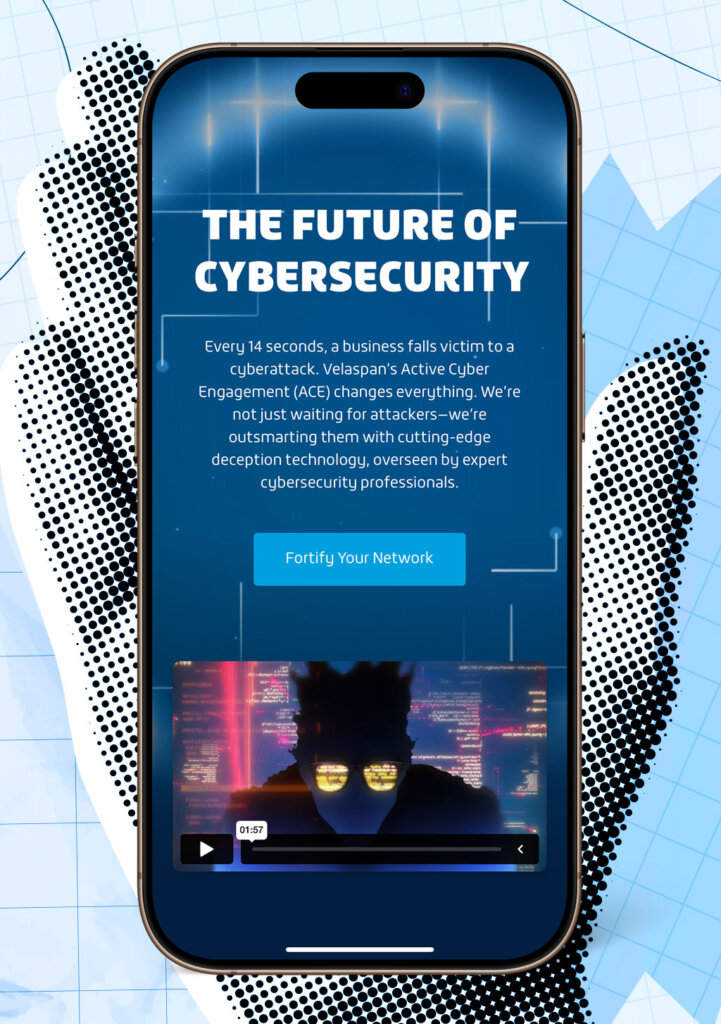On cybersecurity’s ever-shifting landscape, risk management and compliance with security regulations are more than checklist items – they are critical to organizational protection and resilience. As adversaries grow more sophisticated, businesses must adopt advanced methods to protect assets and ensure regulatory adherence. Ideally, a mix of proactive and reactive methods is employed.
Which is where cyber deception comes into play. Organizations can proactively strengthen their cybersecurity profile with cyber deception measures, including:
- Next-generation cyber tactics
- Compliance verification
- Security architecture testing
Before we delve into these, though, we’ll address a question we hear often: What’s the difference between cyber deception and cybersecurity?

What is Cyber Deception Exactly?
Cyber deception is a form of cybersecurity. Deception here refers to its defining feature: Trickery. Cyber deception technology deceives attackers by proactively luring them to false targets.
Cyber deception embodies the proactive approach to cybersecurity that’s all too necessary in 2025. Effective risk management today is, after all, about anticipating threats and mitigating vulnerabilities before a breach can take place. As such, here are three cyber deception tools and benefits that go a long way toward strengthening risk management and compliance.
Evolving Beyond Honeypots: The New Era of Cyber Deception Tactics
Cyber deception has long roots. Early iterations like honeypots served as passive traps—static decoys designed to lure in attackers and buy defenders time. But the landscape has changed. Modern cyber deception has evolved into a sophisticated, proactive layer of defense, creating active, immersive, and adaptive environments that blend seamlessly into real infrastructure.
These next-generation tactics use decoys, baits, and breadcrumbs to mislead adversaries, offering organizations a one-two punch: even if attackers breach the perimeter, they’re drawn into a false environment, wasting time and effort while sensitive systems remain untouched. At the same time, defenders gain valuable intelligence as adversaries unknowingly interact with fabricated assets and simulated data.
Put another way: More than a mere trap, next-generation cyber deception tactics are proactive tools allowing organizations to stay a step ahead of adversaries. Here’s how:
- Risk isolation. Redirecting attackers toward deceptive assets minimizes the risk to production systems.
- Early threat detection. By drawing attackers into a controlled environment, deception environments act as an early warning system, providing critical insights into threat specifics, zero-day vulnerabilities, and novel attack techniques that adversaries might be testing.
- Intelligence gathering. Unlike traditional intrusion detection, modern cyber deception lets organizations study attackers’ behaviors in real time, uncovering their tools, tactics, and procedures (TTPs).
Proactive Compliance Assurance
Compliance with security regulations such as SOC 2, PCI DSS, and HIPAA is a significant component of risk management.
However, traditional approaches to compliance often rely on periodic audits and manual reviews, leaving gaps that attackers can exploit and the chance that security will lag. Cyber deception tightens these gaps. Using deception technologies to test and validate systems against regulatory standards in real time, it does the following, which add up to a robust security posture:
- Validates isolation. Security regulations often require certain systems and processes to remain isolated from others. Deception elements can actively test as much by mimicking restricted environments and monitoring unauthorized access attempts.
- Real-time audits. Instead of waiting for scheduled compliance audits, organizations can deploy deception tools to continuously verify adherence to regulatory frameworks – reducing the risk of non-compliance and providing on-the-spot insights into security gaps.
- Tests policy effectiveness. By simulating compliance scenarios within deception environments, businesses can test whether their policies and procedures work as intended; for example, verifying that access controls effectively prevent unauthorized access and that sensitive data remains encrypted during transit and at rest.
- Reduces audit fatigue. Automated compliance verification through cyber deception reduces the need for manual checks, easing the burden on cybersecurity teams and ensuring a more thorough review process.
Resilience Through Testing
The resilience of a security architecture is measured by its ability to withstand attacks and adapt to emerging threats. Targeted cyber deception deployments offer a unique way to test and refine critical areas of the security framework, including:
- Stress testing defenses. Deception technologies simulate realistic attack scenarios, challenging the effectiveness and strength of firewalls, intrusion detection systems, and other security measures, and collectively identifying weaknesses that traditional testing methods might overlook.
- Incident response. By creating controlled breach scenarios, organizations can evaluate how their teams respond to potential threats. This real-world practice ensures that response protocols are effective and that teams are prepared to handle actual incidents.
- Segmentation. A key principle of secure architecture is segmentation—keeping critical systems isolated to limit the impact of a breach. Cyber deception can test whether segmentation strategies are effective by deploying deception elements that simulate breaches, then monitoring how threats move within the network.
- Defense relevance. Cyber deception is inherently adaptive. It allows organizations to test their security architecture against emerging threats, ensuring their defenses remain up to date in a rapidly changing landscape.
Be Proactive, Be Secure
Remember, on today’s complex threat landscape, standing still is not an option. Organizations must actively engage with emerging threats, validate their compliance, and continuously test their defenses. Cyber deception empowers businesses to take charge of their cybersecurity, ensuring they remain resilient and compliant in the face of ever-evolving risks.
Ready to get proactive about your security? Start the conversation today and see how cyber deception can keep you one step ahead of threats.

